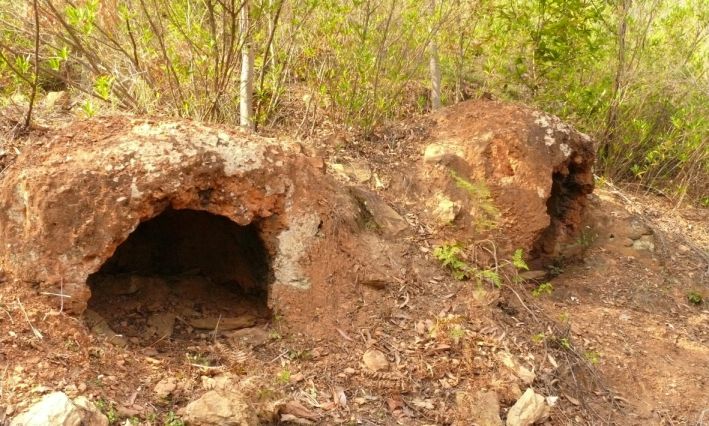Silver mines in the Far Southwest of the Ming and Qing empires
Silver, global trade and mines in China
Why we know so little

Silver, global trade, and mines in China
Research on global trade flows has shown that China acted as the "global sink of silver" (Andre Gunder Frank) from the late 16th to the early 19th century. Through three transformative centuries of early modern globalization, China attracted the lion's share of Japanese and Latin American silver. Research into silver in China has achieved fascinating insights into economic structures and a dual monetary system consisting of minted copper cash and unminted silver (Richard von Glahn, Lin Man-houng, Akinobu Kuroda).
Silver mining, however, has remained an intractable conundrum. On the one hand, Ming and Qing tax records reflect only very moderate 弄本outputs of domestic silver mining (Quan Hansheng/Chuan Han-sheng). On the other, silver outputs reached massive scales during the Song period and mines in the Southwest were productive during the Yuan. it seems extremely hard to believe that mining was reduced to a small-scale village industry at a time when the metal was highly valued. Government restrictions on mining certainly existed, but the late imperial state is not known for long-term stringent execution of its policies. The exhaustion of accessible deposits as well as economic and technical restrictions may have limited the industry.
Scattered mentionings point to a different direction. Early Qing records on troules in the Far Southwest of the empire occasionally indicate the existence of long-standing mines that go back to the Ming period and lead to the formation of towns with several thousand to several ten-thousand inhabitants. A few 18th century records mention mines in the borderlands outside the direct administration of the Qing. A few mentionings draw a relation between domestic and imported silver.
论者以银币之济中国者,首则滇之各厂,次则粤海花银。滇昔盛时,外有募隆,内有乐马,岁出银不赀。
It is said that for the silver that supplies the silver currency of China,the Yunnan mines are most important, while the silver coins that reach Guangdong from overseas come second. When the Yunnan mines were flourishing, there were Mulong in the exterior and Lema in the interior, annually turning out enormous amounts of silver."
He suggests that the output of the Yunnan mines used to be as important as the imported silver and further suggests that two mines, Mulong in the borderlands and Lema in the interior of Yunnan province used to be enormously productive, overshadowing all other mines of the area.
Mining in Yunnan and adjoining regions of the Far Southwest may have been far more important than official records suggest. Research by Yang Yuda based on these indications has found evidence that the scope of mining by Chinese and for the Chinese market in fact has to be reassessed.
If silver mines were more than a village industry, we would like to know Why we know so little?
In a nutshell, the Neo-Confucian attitude towards the economy can be summarized as "commercialize, but keep silent about it." We know that economic life in China was thoroughly commercialized in the Song period. The Mongol conquest ended Song affluence and the population collapse during the wars and the vagaries of policies and weather during the Yuan period encouraged a more rural outpook by the Ming founders, but the commercial economy recovered and continued to expand. Tmothy brook has shown for the High Ming, that the ideal of the peaceful old farmer who had never seen the world beyond his native village had become an ideal that rarely applied to real lives. Ming novels tell us about the hustle and bustle of urban life, while monetarization tied seemingly remote village into far-reaching trade networks. Nevertheless, the ideal was alive and well, while political morality cherished classical ideals of peasants as the foundation of society (农本). The ambivalence towards all non-fundamental economic activities involved a certain unease or even disdain. In the public image, especially in the writings that would be handed on to posterity, farming and scholarship were the preferred topics in characterizing both individuals and regions. Hence, we know little about most non-farming economic activities.
Silver mining was a particularly tricky issue. Because the product was money and extraction involved large numbers of workers and environmental damage, it involved actual and moral pollution. Mines and smelters took over areas and made then unusable for agriculture, they polluted water and affected soils. When conflict between mines and fields were brought to the attention of administrators, they had to defend agricultural uses for reasons of political morality. Effects on local society was perhaps more worrying than environmental issues. The lure of silver could induce people to "leave their villages and turn their backs on their wells" (离乡背井), the very opposite of desired behaviour. In the moral order as well as not infrequently in actual event, mining communities were unruly, temporary communities of large numbers of single men, potential hotbeds of unrest.
At the same time, for the same reason of producing money, silver mines were attractive to the administrators. Labouring under conditions of structural underfunding that was institutionalized in the Ming and Qing state, additional incomes were particularly welcome, both to local governments and to line private pockets. Ming emperors attempted to eliminate covetous hands in the administration by dispatching palace eunuchs to supervise the mines. They succeeded in creating a hated and no less corrupt additional structure. The Qing administration promulgated strict restrictions, which were relaxed for metals needed for mining cash coins. On the ground, the contradictory interests in tax incomes and mining restrictions led to a reluctance of formal licenses and systematic underreporting of tax incomes.
As a result, traditional writtne sources contain little beyond official tax quotas and the names of the licensed mines and next to nothing about the unlicensed mines.

